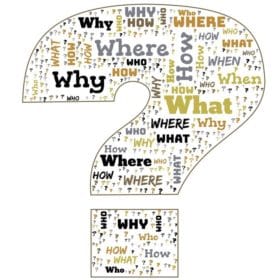Most homeowners want and even strive to have a beautiful and healthy lawn, but it’s not as easy as it seems. You can find yourself spending nearly every weekend mowing, aerating, and doing other tedious yard work only to not have the results you desire. One key step to keeping your lawn healthy is investing in organic lawn fertilizer, so let’s cover all the basics of why this is the best way to keep your lawn looking great!
We’ll cover why organic fertilizer is important, the different types available, and how to choose the best option for your home and yard. Plus, choosing organic also helps reduce our environmental footprint. Let’s dive in! Quick Insight The best organic lawn fertilizer varies depending on soil type and climate; it may be beneficial to check with your local garden center for advice specific to your area. There are many good options available, including all-natural organic fertilizers designed specifically for lawns.
What is Organic Lawn Fertilizer?

Organic lawn fertilizer is a type of fertilizer made from natural ingredients that naturally nourish the soil and keep your lawn healthy. These organic materials are often derived from plant, vegetable and animal sources. While it’s possible to find synthetic organic fertilizers on the market, they don’t contain natural minerals and elements like nitrogen, phosphorous and potassium which can be found in traditional fertilizers.
Those who argue in favor of organic fertilizers suggest they are safer to use because they do not contain potentially-harmful chemicals. Additionally, organic fertilizers help keep the environment free of pollution, as certain synthetic chemicals have been known to harm aquatic life when leached into larger bodies of water. Furthermore, experts agree that organic fertilizers contribute to healthy soils while also producing strong grass plants with stronger root systems than those applied with synthetic fertilizers.
One strong argument against organic fertilizers is that they may require more work for achieving desired results since energy inputs for naturally generated products tend to be higher than for synthetically produced ones. They may reply on regular treatments instead of one big treatment with synthetic fertilizer for the achievement of desired results. Also, since organic fertilizer isn’t completely soluble in water, it could take longer for nutrients to become accessible for plants to take up, as opposed to traditional synthetic fertilizers which can dissolve quickly and provide almost instant results.
Despite these counterarguments, there is much evidence to support the use of organic fertilizer as a healthier and more sustainable method for keeping your lawn green and healthy. It not only produces strong grasses but also contributes to improved soil health over time by adding important trace elements like calcium, magnesium and sulfates back into the soil profile.
Furthermore, studies have shown that a continued use of organic fertilizer can result in increased infiltration rates of water over time due its improved structure compared with non-organic treated soils. Moving forward with this discussion on the benefits of using organic fertilizer will help shed even more light on why the healthier approach may be the way to go for maintaining a healthy lawn ecosystem.
Benefits of Using Organic Fertilizer
Organic lawn fertilizer is an excellent way to maintain the health of your grass. Gardeners and homeowners alike are increasingly turning to organic products because of their environmental benefits and natural-based ingredients. Organic lawn fertilizer offers a number of advantages over traditional chemical-based products, making it one of the most beneficial options to consider when protecting and promoting the health of your lawn.
One of the biggest advantages of using organic fertilizer for your lawn is improved soil structure. Organic fertilizers are made up of naturally occurring materials such as compost, manure, animal byproducts, and plants, which all release nutrients slowly into the soil. By providing food for microorganisms in the soil, organic fertilizers help create a living layer within the dirt below. This building block layer will keep water from running off, allow air to pass through, provide housing for earthworms, and protect plants’ roots from temperature extremes.
In addition to improved soil structure, organic fertilizers promote healthy plant growth by supplying nutrients at a steady rate and fostering beneficial microbes that work in tandem with plant root systems. Because these natural materials breakdown slowly over time, they don’t release their nutrients all at once like some chemical-based fertilizers do. This slow-release approach helps avoid harmful spikes in nitrogen or other nutrient levels that can burn plant roots, ultimately leading to fewer weeds and healthy grass year round.
The use of organic lawn manure also provides environmental benefits. These material contain fewer chemicals than industrial fertilizers that make their way into streams and rivers during rainwater runoff as well as our groundwater table. They also stay close to home; when applied correctly according to directions, you won’t run the risk of having them blown away by wind or washed away by long bursts of rainfall like synthetic chemicals can be. Finally, organic fertilizer can improve the overall composition and quality of soil for years after it has been used – making it an excellent return on investment for lawn owners looking for lasting results.
Organic lawn fertilizer clearly presents substantial benefits for maintaining a healthy yard without compromising its sustainability – but as with any fertilizer choice, careful consideration should be taken to ensure best practices are being followed in order to maximize positive outcome. With that in mind let’s take a look at where you can find even more sustainable ways to ensure your yard remains lush and vibrant come springtime: sources of organic lawn fertilizer materials.
Sources of Organic Lawn Fertilizer Materials

Organic fertilizers offer several advantages over traditional fertilizers and other chemical-based options. Not only are they more ecologically friendly, but they also release nutrients gradually over time so that your lawn is fed and nourished at a more consistent rate. To that end, understanding the sources of organic fertilizer materials is critical to keeping your lawn healthy, vibrant, and green.
There are typically two main sources of organic lawn fertilizer on the market. The first type is composted manure or composted yard waste, such as grass clippings or leaves. This provides a slow release of nitrogen and helps to break down the soil for better water absorption and root development. The second type is composed of byproduct from natural sources such as fish waste or seaweed extract. These often provide additional micronutrients that help to promote healthier turf growth.
Both types of organic fertilizer carry their own benefits and drawbacks. Composted manures, for example, can be high in salt content which can build up in the soil over time leading to damage or environmental contamination if not managed properly. On the other hand, fish byproducts may cost more upfront but will provide a steady stream of nutrition for your lawn over long periods of time with less risk of contamination to the local environment. Ultimately, careful consideration must be taken when selecting an organic fertilizer source as different grass types may require unique nutrient forms or composition profiles.
By utilizing these sources of organic fertilizer materials, you can help ensure that your lawn has access to the right levels of nutrition throughout the growing season without creating potential problems for yourself or your local environment. At the same time, dead vegetation and pests can also serve as valuable sources of organic fertilizer material. We’ll explore this concept further in the next section.
- Organic lawn fertilizers are generally safer for pet and human health than synthetic fertilizers due to their lack of pesticidal additives.
- A 2012 study found that using organic fertilizers had both positive and negative effects on the microbial composition of soil—positively increasing microbial biomass but negatively lowering bacterial diversity.
- A 2015 study found that planting a cover crop helping to prevent nitrogen leaching from organic fertilizer sources and also improved yields compared to standard fertilization practices without cover crops.
Dead Vegetation and Pests as Sources of Fertilizer
When it comes to organic fertilizer sources, dead vegetation and pests can provide a unique range of nutrients that traditional materials like manure and compost may not. But, debate ensues as to whether or not these sources should be used. On one hand, some believe that including dead matter from insects and plants in the soil could help add beneficial compounds for fertilizer purposes. On the other hand, others suggest using more conventional material due to worries about spreading disease and microbes.
The truth lies somewhere in between. If a person is able to properly manage their pest populations and collect debris carefully and safely, such materials can be responsibly leveraged as an organic fertilizer source. When done correctly, dead vegetation can act as a source of nitrogen, phosphate and potassium – all three essential elements of a balanced fertilizer mix. Plus, the use of insect carcasses can also add another array of macro-nutrients including phosphorus, calcium, magnesium and sulfur.
However, it’s best left to those with experience in organic garden management as well as soil testing since incorrect use can carry potentially damaging outcomes. It’s worth considering that if your lawn is already naturally good at repelling pests then dead matter from insects might not be necessary in the first place. Instead, you might want to focus on healthier alternatives for your fertilizing needs before attempting any deliberate addition of these materials.
By now it should be clear to see that dead vegetation and pests can make for viable sources of organic fertilizer so long as it is managed responsibly with input from experienced professionals. With this in mind, we can move onto discussing how these fertilizers are applied in order to receive the desired effects.
How to Apply Organic Lawn Fertilizer
Applying organic lawn fertilizer can be done in various ways and can vary depending on the type of organic fertilizer you choose. The most common way to apply organic lawn fertilizer is through a spreader, which gives you the ability to disperse the fertilizer over a larger area more efficiently. Other ways to apply organic fertilizer are hand-spreading or simply mixing the granules into the soil. Research has suggested that fertilizers should not be applied too heavily and instead spread out over multiple applications, as this approach is known to yield better results.
The debate surrounding the effectiveness of organic lawn fertilizer still continues on today. Some claim that it can act as an effective nutrient supplement while others suggest that its slow release nature makes it less effective than synthetic fertilizers with quickly accessible nutrients. All sides agree however that organic lawn fertilizers pose fewer risks to your wallet and environment in comparison to synthetic ones. Additionally, organic fertilizers are also known to benefit organisms below ground such as earthworms, making them ideal for improving soil health overall.
Given both its benefits and risks, understanding how to properly apply organic lawn fertilizer becomes all the more important – especially when considering there are other alternatives available at our disposal. That being said, understanding these alternatives and determining which is best suited for our needs remains an important part of making responsible decisions when it comes to caring for our lawns.
Alternatives to Organic Lawn Fertilizer
When considering how to keep your lawn healthy, organic lawn fertilizer is often touted as the best solution. However, it’s not the only option. There are a variety of alternatives to organic lawn fertilizer that can be beneficial for your lawn and garden.
Chemical Fertilizers
Chemical fertilizers can be an effective way to nurture your lawn in some situations. These products are formulated to deliver quick-release nutrients immediately—unlike organic lawn fertilizers, which slowly release their nourishing compounds over time. This can be helpful when dealing with poor soil or when quickly greening up neglected grass. On the downside, chemical fertilizers have the potential to damage soil if used too frequently and can also pollute waterways if improperly used. In addition, they often lack the broad range of minerals found in organic fertilizer blends. It’s important to read product labels carefully and use them as instructed by the manufacturer.
Synthetic Fertilizer Alternatives
For those who want a more natural choice, there are several synthetic fertilizer alternatives on the market today. Products such as neem cake, fish meal, and kelp meal provide essential nitrogen and other nutrients for plants without compromising their natural setting. They’re also more cost-effective than traditional chemical fertilizers, making them an attractive choice for budget-conscious gardeners.
Compost and Mulch
Composting is an age-old gardener’s trick that results in a rich source of vital nutrients for grass and plants. Make sure to use composted materials appropriate for grass growth—leaves and grass clippings work well and are available year-round. Applying a layer of mulch made from organic materials (such as pine needles or bark chips) will help retain moisture and control erosion while providing nutrition over time to plant roots below ground level.
The debate between organic and non-organic products has been ongoing for years—it’s ultimately a personal choice for each gardener. When choosing a fertilizer for your lawn, consider factors such as cost, accessibility, speed of results, environmental impacts, and what type of application works in your particular garden situation (liquid or granular).
Answers to Frequently Asked Questions with Detailed Explanations
Are there environmental benefits to using organic fertilizers on lawns? Yes, there are many environmental benefits to using organic fertilizers on lawns. Organic fertilizers can reduce the amount of pollutants in the soil, such as nitrogen and phosphates, because they release their nutrients gradually instead of all at once like chemical fertilizers do. This reduces the chances of nutrient runoff making its way into local waterways, which can harm plant and wildlife. Additionally, organic lawn fertilizers improve soil health by adding beneficial bacteria that help break down organic matter, reducing compaction and increasing the water-holding capacity of the soil. This helps grass to stay healthy even during periods of drought, reducing the need for extra watering. In addition to all this, most organic fertilizers are less expensive than chemical alternatives and last longer, making them a cost-effective choice for keeping your lawn healthy.
Are there any common organic fertilizers for lawns? Yes, there are several common organic fertilizers for lawns. These include compost, manure, grass clippings, and seaweed. Compost is a great fertilizer for lawns because it helps improve soil structure as well as provide essential nutrients such as nitrogen, phosphorus and potassium. Manure is another great garden soil amendment that not only helps to keep your grass healthy but also improves the soil porosity and water retention. Grass clippings can also be spread on your lawn, as they reduce thatch build-up and give back some of the nutrients taken out by mowing. Finally, seaweed contains a wealth of beneficial trace minerals that can help enrich poor soils and keep your grass looking its best.
What are some advantages of using organic fertilizer compared to chemical-based fertilizer?
Organic fertilizers offer a number of distinct advantages over chemical-based fertilizers when it comes to lawn care.
First and foremost, organic fertilizers provide a natural, yet effective way to nourish your lawn without any damaging side effects. This is because organic fertilizers are created from plant, animal and mineral sources and contain natural nutrients that help promote grass growth and soil health, rather than simply providing a quick nutrient boost. In contrast, chemical based fertilizers may contain synthetic compounds such as ammonium nitrate or phosphates which can damage the soil and are harmful to the environment.
Second, organic fertilizers provide a safer way to fertilizer your lawn since they do not pose potential health risks like chemical-based products do. Organic fertilizers are free of toxic pollutants that may be associated with chemical-based products, such as lead and arsenic. Additionally, unlike chemicals that can cause long-term damage to the soil and underground water systems, organic fertilizers break down relatively quickly and do not produce dangerous byproducts.
Finally, organic fertilizers often work in harmony with other plants in your lawn or garden, creating a healthier environment where plants thrive naturally while still giving you the results you want. Natural bacteria and fungi help to break down the components of the fertilizer so it’s available to the roots of your plants when they need it most. This helps reduce fertilizer runoff into surrounding streams or lakes which would otherwise occur with chemical-based products.
By using organic fertilizer in place of chemical-based alternatives, you can provide a much safer solution for your lawn while also having peace of mind knowing you’re preserving the environment around you for generations to come!
